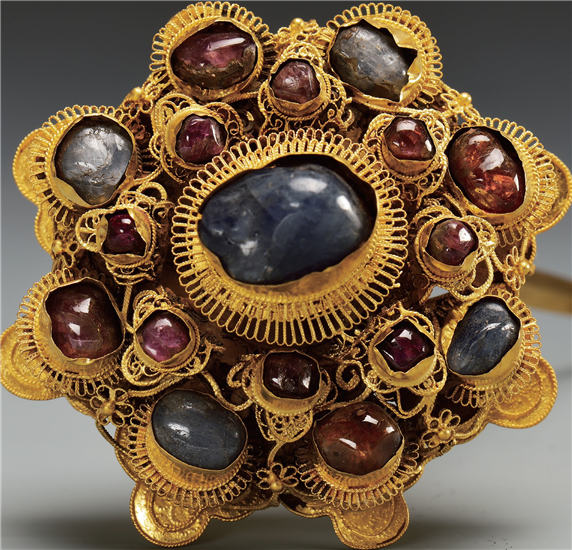Treasures on the global stage
By Zhao Xu | China Daily | Updated: 2018-01-27 09:00

The exhibition's first stop was the Petit Palais in Paris, Qin says. It was also shown in Bucharest, the capital of Romania, a country that was friendly with the People's Republic of China, founded in 1949, when there was still a lot of hostility around.
There were three stops for the show in the United States: the National Gallery of Art in Washington, the Nelson-Atkins Museum of Art in Kansas City and the Asian Art Museum in Los Angeles, a city with a high Chinese American population.
"The relationship between China and the US, which reached freezing point in the 50s and 60s, started to thaw in the early 1970s," Qian says.
"What was dubbed as ping-pong diplomacy, the exchange of table tennis players between the two countries, contributed to this warming-up, and it was hoped that the exhibition could do the same."
Today the exhibition, titled Treasures of China, is still on the road, the last two stops being in Latvia and Lithuania, the first two Baltic Sea countries it has been to, in late 2016 and early 2017. There are plans for it go to Saudi Arabia around September.
The exhibits have undergone repeated changes, thanks mostly to the many archaeological discoveries made since the 1970s, but the mission is unchanged, Qian says.
"These days we are trying to reach those places with little previous contact with Chinese culture. It's hoped that the display becomes something of an initiation for the locals."
If the Treasures of China exhibition has summoned up some of the best from the entire country, then there is one Chinese museum that can mount monumental shows drawing solely upon its own collection. That is the Palace Museum in Beijing, also known as the Forbidden City Museum. Royal residences for successive emperors during the Ming and Qing dynasties (1368-1911), the sprawling 720,000 square meters is home to numerous treasures amassed down the centuries by men who ruled over one of the world's largest empires.
"Thanks to this enviable collection, we were eyed by museums and art institutions across the world," says Ma Shengnan, a museum researcher who specializes in palace life and rituals.
"From all of them we pick the most renowned for cooperation."
These have included the Royal Ontario Museum and the Vancouver Art Gallery in Canada, both stops for a grand 2014 display. With a total of 414 exhibits, the show presented a comprehensive review of court life during the Ming and Qing era and was the largest exhibition the Palace Museum had ever held in North America.
Another one was the National Gallery of Victoria in Melbourne, where, between March and June 2015, an exhibition focusing on the life and rule of the longest-reigning Qing emperor Qianlong was held.
And it is not just a one-way street, Ma says.
"On many occasions we are engaged in exchange shows with a foreign museum, whereby we send out an exhibition featuring part of our own collection and get one in return. The themes of the two exhibitions share a certain relevancy, which often means a royal connection."
























